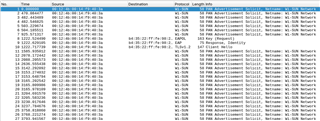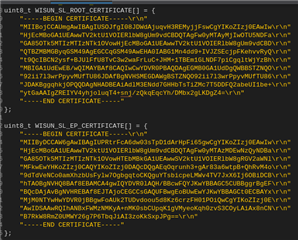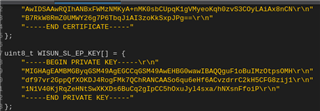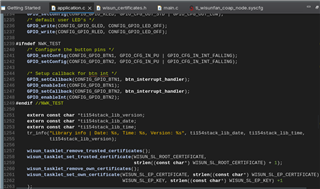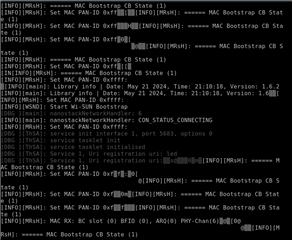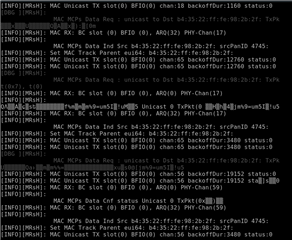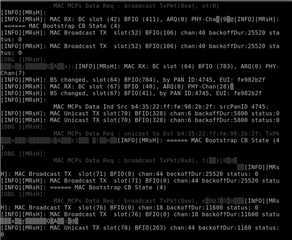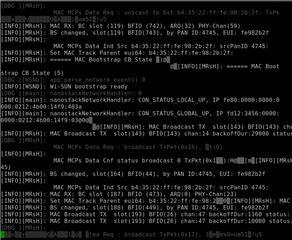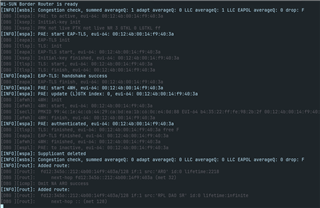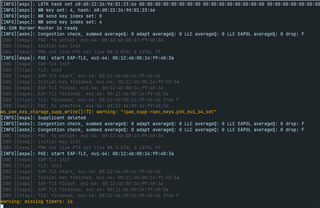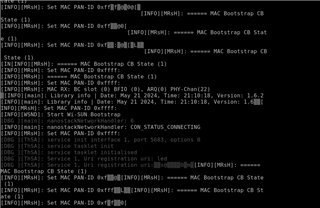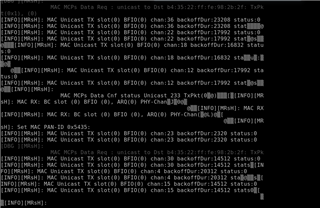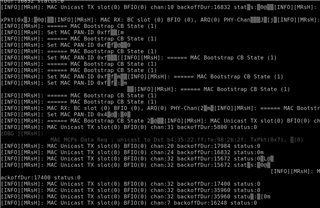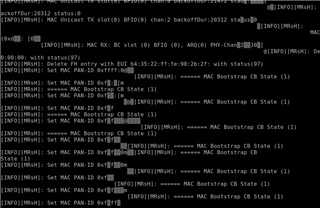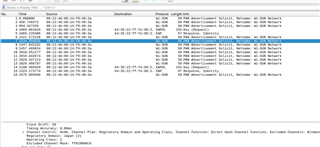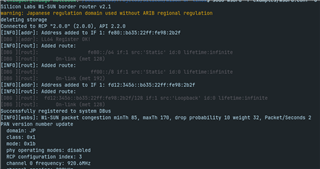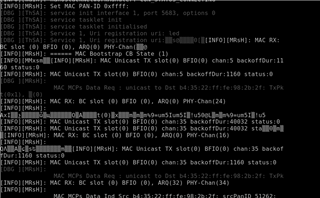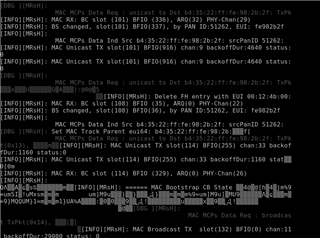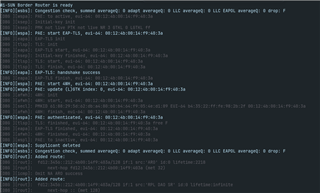Other Parts Discussed in Thread: SYSCONFIG
Tool/software:
Hi,
Currently, both solutions worked really well on FAN 1.0 using the default NA phy config. However, while trying the BZ phy to validate the interoperability between both stacks for our products, we faced some serious problems with performance and connection time. I could connect the network after some time (about 30 minutes) on two different occasions only, and in both of them, the performance was below average, with about 90% of packet loss. Below I'm showing the logs for the connection routine of both configs. We think that there could be something wrong with TI's BZ phy.
NA config outputs: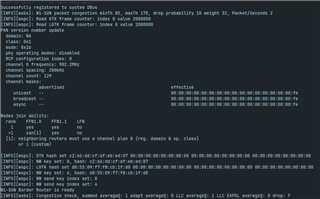
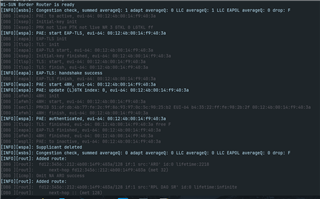

BZ config outputs:
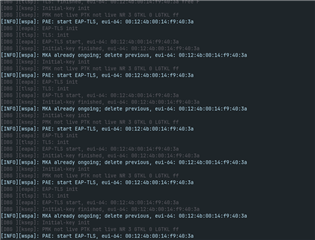
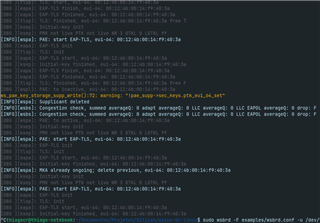
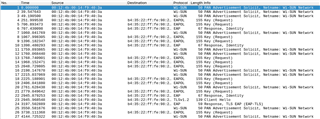
Here are the PCAP files:
simulation_pcap.zip
Another thing we discovered is that there are some differences between both configs while checking them with a Spectrum Analyzer (basically, TI's BZ phy ends on channel 90, while Silicon ends on the last channel 129, we tried changing TI's BZ to end on channel 129 and while the change did indeed take effect, the problem remained).
Silicon's BZ phy on the spectrum analyzer:
TI's BZ phy on the spectrum analyzer:
Any help would be appreciated,
Thanks in advance,
Thiago.


